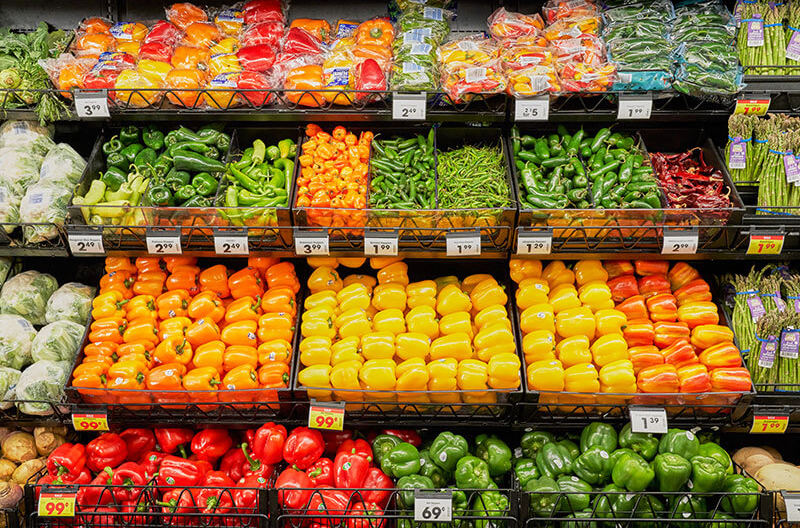The four weeks in May generated $60 billion total food and beverage sales, increased 4.3 percent over May 2022, according to Circana, 210 Analytics and the International Fresh Produce Association.
Perishables, including produce, seafood, meat, bakery and deli had a below-average dollar growth performance, but this was entirely prompted by different levels of inflation.
May fresh produce sales reached $6.1 billion. “Both fruit and vegetables performed well in May, which helped to move the 52-week numbers within 2 percentage points of year-ago levels,” said Joe Watson, IFPA’s VP of retail, foodservice and wholesale.
“This is significantly better than the total food and beverage performance, as well as significantly better than fruit and vegetable counterparts in frozen and canned.”
Weekly fresh produce sales averaged between $1.48 billion and $1.59 billion.
“The impact of Memorial Day on weekly sales in comparison to a non-holiday week shows that celebrations continue to be an important reason to splurge a little,” said Jonna Parker, team lead for fresh at Circana.
“This means celebrating primary and secondary holidays in-store and online is important to support sales growth. Additionally, there is opportunity in creating your own holidays and events.
“While fresh produce prices were flat in May compared with May 2022, inflation in frozen and shelf-stable fruits and vegetables was significant. In turn, these very different levels and movements in pricing prompted the different dollar and unit growth performances.”
Watson said, “April pounds popped into positive growth territory, but unfortunately we gave back a little ground in May. Still, the longer-term trend continues to take year-on-year pound sales growth closer and closer to where we want to be.”
Fresh produce pound sales have been trailing behind year ago levels since April of 2021. In May 2023, pound sales trailed year-ago levels by 0.8 percent.
Unlike April, when fruit pound sales increased substantially year-on-year, it was vegetables that had the better volume performance in May.
“Six out of the top 10 fruit sellers sold more pounds in May than May 2022,” Parker said.
“Berries continued to be an incredible powerhouse: twice the size of the No. 2 seller and achieving a 3.3 percent gain in pounds. There aren’t too many items around the store that show that kind of growth in the current environment.”
Other items with increased volume sales were melons, avocados, mandarins, oranges and pineapples. Avocados and grapes continued to have a large gap between dollar and volume performances as a result of deflation and inflation.
Items with increased dollar sales in May 2023 compared with last year were berries, melons, bananas, mandarins and pineapples.
“Cherry sales fell just outside of the top 10 in May,” Watson said. “But the California and Washington crops certainly were the topic of much discussion at our Chicago retail conference last week. In May, sales five folded with each passing week, and I fully expect cherries to be a top 10, if not top 5, sales contender in the June and July reports.
“The dollar and pound performance among the top 10 vegetable sellers was all over the board. Four items increased pound sales, being tomatoes, onions, peppers and cucumbers. With the help of inflation, six out of the 10 top vegetable sellers grew dollar sales, led by potatoes and lettuce.”
The dual power of value versus convenience can be seen in sales for both lettuce and salad kits, the No. 3 and No. 4 sellers. However, whereas lettuce kept year-on-year pound sales flat in May, salad kits experienced a decrease of 5.9 percent.
In May, fresh vegetables added $57 million in additional dollars versus May 2022, whereas total fruit lost $100 million year-over-year.
Berries were the biggest contributor to new produce dollars, followed by potatoes and lettuce. Gains were driven by a combination of increased pounds and inflation for items such as mandarins and melons, whereas others benefited from higher prices in May versus May 2022.
“Retailers have become much more active in teaching consumers to prepare various fruits and vegetables on the grill,” Watson noted.
“For fresh produce, summer means a focus on seasonal items and local sourcing – two of the most desirable attributes to drive an unplanned purchase. Showing consumers new and expanded usage occasions can be just that extra incentive they need to make the purchase.”

